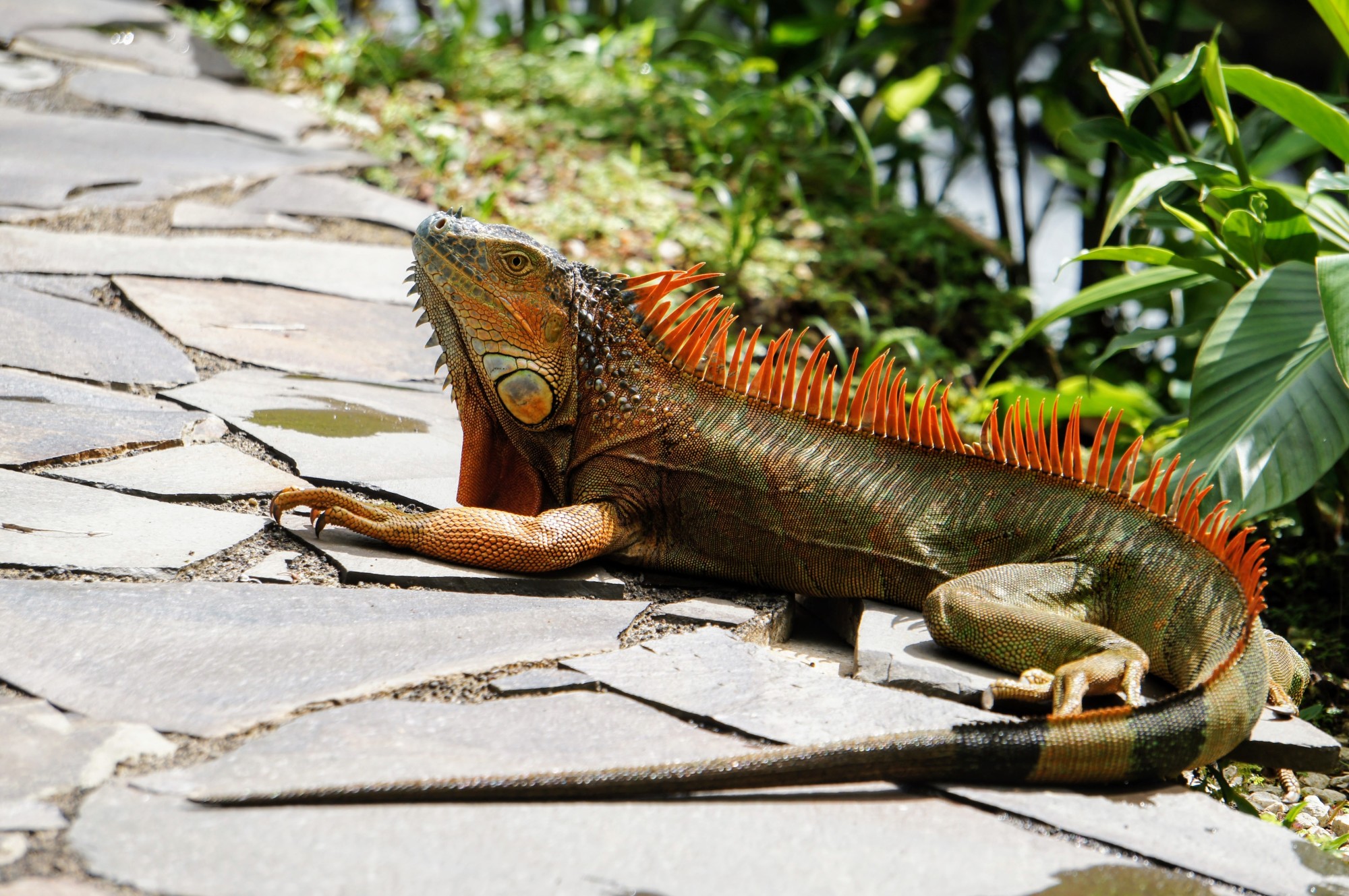The Florida iguana problem began in the mid-1960s. These lizards started as low-maintenance exotic pets, but soon, many grew too large to keep or simply escaped. Since they’ve become a destructive invasive species.
In a recent study by the Department of Agriculture, iguanas ranked 15th out of 37 invasive reptiles. For Florida residents, that ranking may feel too low, especially if you’ve recently seen an iguana on your property.
Here’s a look at the different types of iguanas in Florida and what you can do to keep them out of your home.
Types of Iguanas in Florida
There are three members of the iguana family (Iguanidae) established in Florida: the green iguana, the Mexican spinytail iguana, and the black spinytail iguana. These lizards are classified as an invasive, non-native species
Florida’s subtropical climate allows these creatures to thrive. They reproduce easily and laze about the environment.
Green iguanas come from South America, and they come in colors other than green. Depending upon the season, a green iguana might actually be black, brown, orange, or even pink. These creatures live in shrubs or trees and have the ability to swim.
A green iguana will have rows of spikes down its spine and up its tail, with black rings dotting its hide. Males can grow to over five feet in length and weigh upwards of 20 pounds. Females typically don’t get larger than seven pounds.
The Mexican spinytail and black spinytail iguanas come from Central American and are very similar. A Mexican spinytail sports ridged scales along its tail and will present as brown with a yellow belly. A black spinytail has dark bands across its body.
Neither spinytail grows much larger than four feet in length, and both are skittish around people. Most live in burrows they’ve dug.
Keeping Iguanas Out of Your Home
The invasive iguana remains a nuisance to homeowners and business owners. These lizards damage landscaping and gardens, leave droppings on lawns and in pools, and might damage property by digging burrows.
There are several deterrents to consider to help with your iguana problem. First, never directly or indirectly provide these lizards with food. Avoid leaving ripened fruits or pet food outside.
You’ll also want to avoid planting vegetation iguanas enjoy eating, such as bougainvillea, hibiscus, orchids, and roses. Consider instead planting iguana-resistant vegetation such as crotons, milkweed, and oleander.
If your property has a seawall, install a wire fence barrier. You can also spray basking iguanas with water until they leave the area.
Iguana Removal Services
No matter the types of iguanas in Florida, they feel as ubiquitous as the sun. But that doesn’t mean you want these lizards crawling about your yard or business. While you can trap these creatures yourself, that’s not done without risk.
So why not contact the best professional pest removal company in Florida to solve your iguana problem?
We help manage the iguana population throughout the state of Florida and are committed to keeping your property safe and clean. Get a free quote for our services today!



Comments are closed